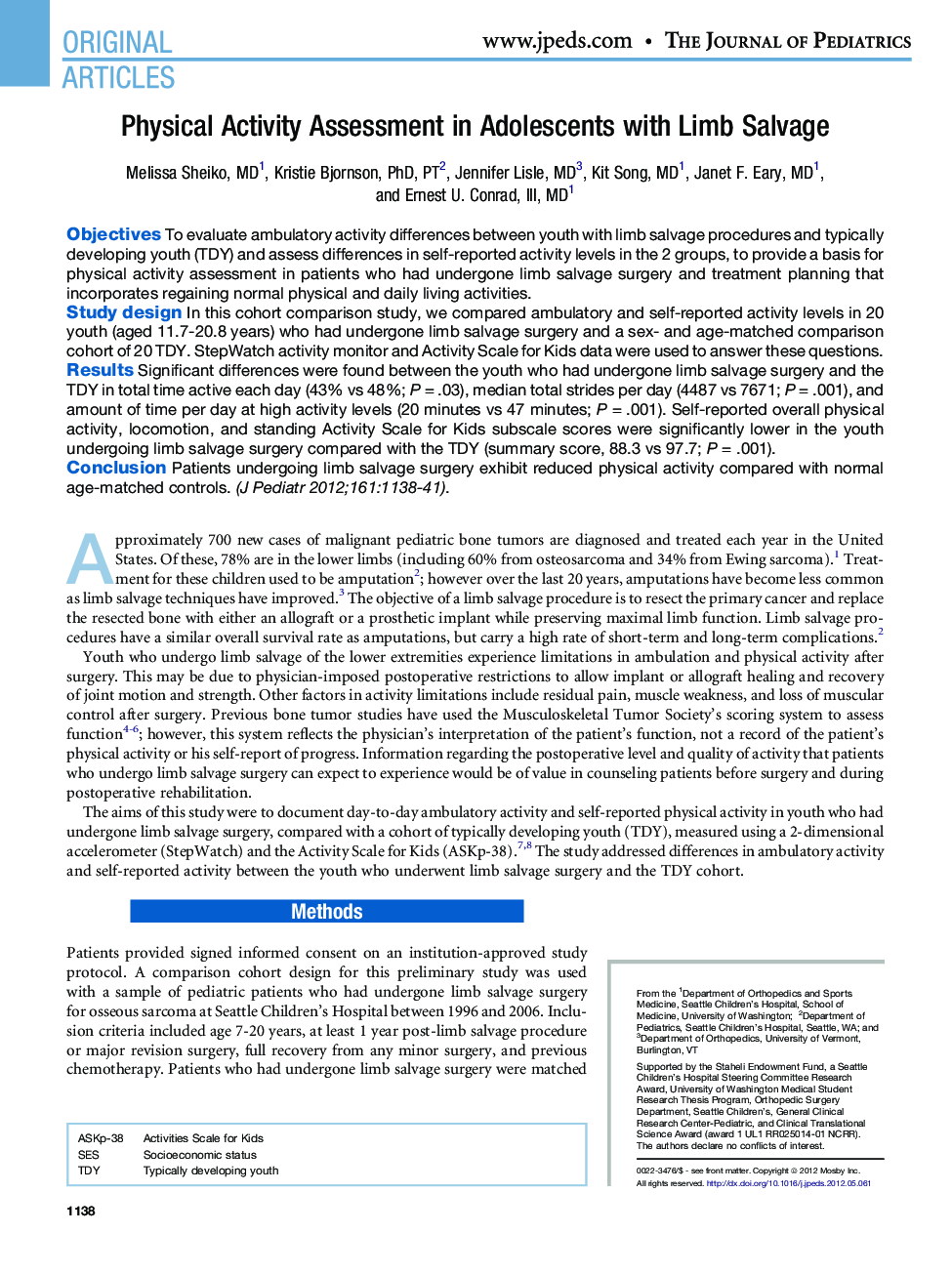| Article ID | Journal | Published Year | Pages | File Type |
|---|---|---|---|---|
| 4165511 | The Journal of Pediatrics | 2012 | 4 Pages |
ObjectivesTo evaluate ambulatory activity differences between youth with limb salvage procedures and typically developing youth (TDY) and assess differences in self-reported activity levels in the 2 groups, to provide a basis for physical activity assessment in patients who had undergone limb salvage surgery and treatment planning that incorporates regaining normal physical and daily living activities.Study designIn this cohort comparison study, we compared ambulatory and self-reported activity levels in 20 youth (aged 11.7-20.8 years) who had undergone limb salvage surgery and a sex- and age-matched comparison cohort of 20 TDY. StepWatch activity monitor and Activity Scale for Kids data were used to answer these questions.ResultsSignificant differences were found between the youth who had undergone limb salvage surgery and the TDY in total time active each day (43% vs 48%; P = .03), median total strides per day (4487 vs 7671; P = .001), and amount of time per day at high activity levels (20 minutes vs 47 minutes; P = .001). Self-reported overall physical activity, locomotion, and standing Activity Scale for Kids subscale scores were significantly lower in the youth undergoing limb salvage surgery compared with the TDY (summary score, 88.3 vs 97.7; P = .001).ConclusionPatients undergoing limb salvage surgery exhibit reduced physical activity compared with normal age-matched controls.
